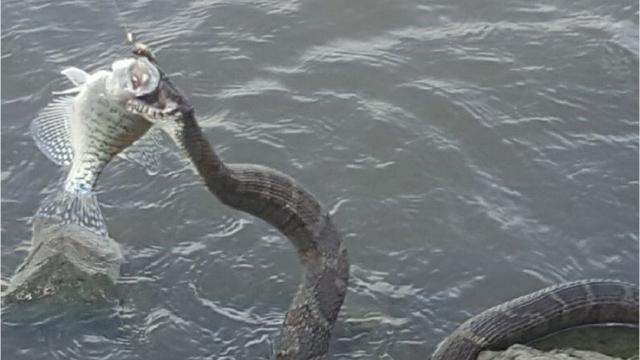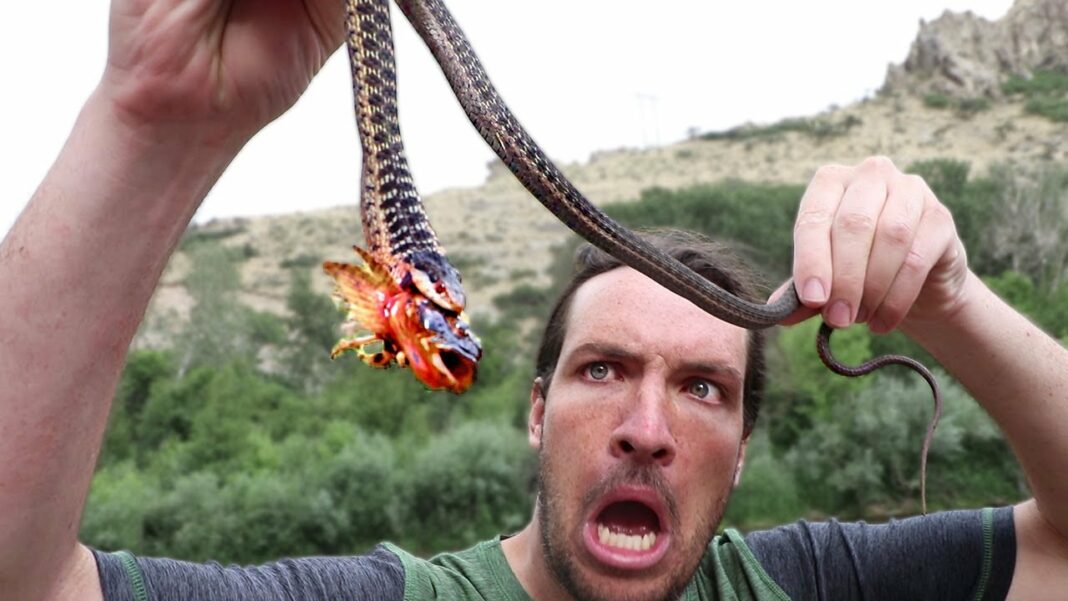On a warm Memorial Day, Erik Neave went fishing in the Nottoway River in Southampton County. He was in for a surprise that would remind him to be cautious while out on the water. He spotted a 6-foot long water moccasin having a 1.5–2-pound catfish for breakfast. This is an exceptionally large snake and one that is the source of many myths and legends.
What Is A Water Moccasin?
A water moccasin is a type of viper and a snake whose bite can be fatal. They are found throughout the south and along the east coast. They are also known as the swamp moccasin, black moccasin and cottonmouth. They often range from 2-4 feet long and have a thick body. Their favorite prey is frogs, but catfish, bass, bluegill, salamanders and other snakes are also on the menu. They spend much of their time in the water hunting, but they can be found on sunning themselves on the banks and logs.

The cottonmouth gets its name from its behavior when startled. When frightened, it will open its mouth wide to show its fangs and the inside of its white mouth. They are not known to be aggressive unless they are defending their territory. Often the threat is more than enough to make the animal back away. If not, they may receive a potentially fatal bite.
How Dangerous Are They Really?
There is no doubt that the threat display of the water moccasin will get the animal more than its amount of due respect, and with good reason. They have a reputation for being aggressive, and stories abound of them trying to crawl in boats. If a water moccasin was trying to crawl in a boat or canoe, it might have thought the boat was a floating log. They are not trying to “get you.”
Another legend is that cottonmouths will hang out in trees waiting to drop into passing boats. Water mocassins will climb trees, but not often. More than likely these were common water snakes that look similar to water moccasins and like to hang out in trees. If they happen to land in your boat, it was probably just luck, not an aggressive attack. They are nonvenomous but are often the target of unfounded attacks because they are mistaken for their deadly lookalikes.

Water mocassins generally will not strike unless they feel they have no other choice. They will try to get away, but if they think they have no choice, they will stand their ground. Snakes, including water mocassins, are prey for hawks and owls. Their first instinct is to head to the water when they feel threatened.
Local legend would have you believe that you need to add water moccasins to your list of fears, but in actuality, there are less than ten deaths every year from snakebites. A majority of them are from rattlesnakes, with copperheads coming in second.
It is highly unlikely that a water moccasin will try to get in a boat in an attempt to kill everyone, but this makes a much better fishing tale around the campfire than a frightened nonvenomous snake trying to get away. That does not mean that we should abandon a healthy respect for them. It is important to keep an eye out and try not to frighten any snake that you see. This is also not to say that this did not happen to someone at some time in the past. It is just not as likely to happen as these colorful fishing tales would have you believe. For the most part, have a healthy respect for nature and keep calm, it will more than likely go away.
Visit https://www.tidewaternews.com for more breaking news.









